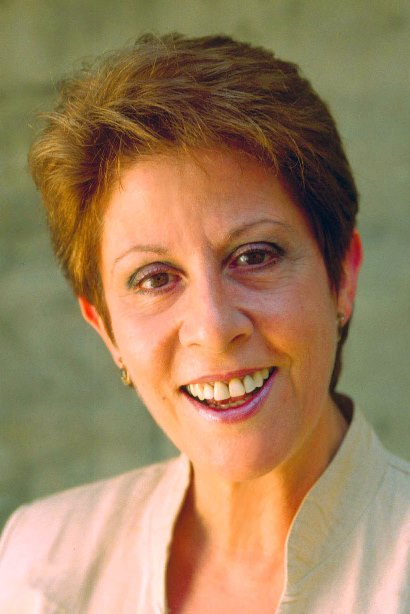

 |
The Beatles Opened for Helen Shapiro |
|
The
name Helen Shapiro may not be as familiar to today’s generation of music fans
as, Beyoncé, Norah Jones, or Kelly Clarkson, but at the age of fourteen, in
1961, Helen Shapiro owned the pop charts, the airwaves and the concert halls in
England, as songs such as, “Walking Back To Happiness,” and, “Don’t You Know,”
became #1 hits. In total that year, Shapiro had three # 1 hits and four songs in
the top ten. She would later go on tour and none other than an up and coming
band by the name of The Beatles, would become her opening act. Shapiro went on
to star in a London West End production of
Oliver,
and several other touring musicals. She had a formidable career, as a jazz
vocalist who both toured with legendary British musician and bandleader
Humphrey Lyttelton’s
band, and she also enjoyed a successful solo career.
Several years ago, Helen Shapiro walked away
from her mainstream music career, as invitations were flooding in, with requests
for her to appear at jazz festivals.
She
declined those invitations so that she could devote herself to another passion,
recording and singing gospel songs, and speaking to others about the Christian
faith that she first embraced in 1987.
Recently, Helen
Shapiro spoke to
Riveting Riffs Magazine,
from her home in
Today, during what she refers to as her outreach ministries, which functions
under the umbrella of
Manna Music,
Shapiro brings together two of the most significant influences in her life, her
faith and her pop music career, and she does so by singing the song, “Walking
Back To Happiness,” a tune that helped catapult her to the top of the charts in
the early sixties. She says, “I sing that song, and a couple of others, with
backing tracks. People still know it, and amazingly kids and teenagers seem to
know it, as well as the oldies (people) that were around at that time. It is
telling a story, I am walking back and forward with joy and with my Lord. I am
very grateful for that song, even though I didn’t like it in the first place. At
the time, I thought that it (the song) was corny. I have always been a jazzer,
and I was a jazz fan when I was a kid. As far as pop music was concerned I
preferred something (else). I had other hit records between ’61 and ’63, but
that one stuck.”
Helen
Shapiro takes us back to those heady days in 1961, when a then unknown teenage
girl, became all the rage in Shapiro remembers somewhat comically, the reaction of
her friends at school, “My school friends didn’t treat me that much differently.
They were pleased for me, but I was more popular with them, because I could get
autographs for them of Cliff Richards and The Shadows, and all of those other
people, who were big stars at the time. My teachers didn’t know what to do with
me, or what to make of me. I tried to be good at school. I was allowed to take
the odd half day off to go and do a radio or a TV thing. “
Helen Shapiro’s early success in the music industry, was
not without its challenges, as her record label EMI did not let her know that
Paul McCartney and John Lennon had approached them about having Shapiro record a
song that they had written for her, “Misery,” and instead, in one of the biggest
blunders in music history, decided that it would not be a good move for her
career. In a similar fashion, although she recorded the pop tune, “It’s My
Party,” EMI made a decision never to release Shaprio’s single, and as history
records, a young American singer by the name of Lesley Gore, went on the turn
the tune into a smash hit. Those two moves by EMI may have kept Helen Shapiro
from being at the leading edge of the British Invasion into the North American
music scene, and instead her popularity in her homeland began to wane.
“Certainly, the hits dried up in this country (
“Through the last half of the sixties and the seventies I did a lot of clubs and
cabarets and then I did the
Oliver thing.
(After that), I didn’t work, because I was
determined not to go back to the clubs. I wanted to go back to the theatre. I
was out of work for nine months and then I did a couple of little theatre tours.
I was approached about making a jazz album of standards tunes like Gershwin and
all of that. They had a gimmick and wanted to use synthesizers along with the
regular instruments. I did this album, at the beginning of ’83, and it came to
the attention of some big jazzy people.
Humphrey
Lyttelton
was a British jazz legend, and he heard the album,
which had received great reviews.
He asked me if I
would be interested in doing a Duke Ellington anniversary concert in ’84, which
would have been the tenth anniversary of the Duke’s death. I jumped at that,
because it was something that I had wanted to do for years, and we did this
concert in April of ’84, at the Royal Festival Hall in Helen
Shapiro, it would appear, was destined to become a singer. “The very first
musical that I was taken to see was
Calamity Jane,
with Doris Day, and from that moment on I wanted to be Doris Day. I saw
everything that she did,
Love Me Or Leave Me,
and all of those fifties things. It was when I was very little, that I knew that
I wanted to be a singer. I was brought up in a musical family anyway, and it was
just so natural to me.” In
1979 -80 Helen Shapiro was cast as Nancy in the London West End production of
Oliver
and she recalls the moments just prior to
the curtain rising, “I will never forget the opening night, sitting in the
dressing room. There I was in the West End of London, getting ready, and over
the speaker came the overture from the orchestra. It was such a thrill, and I
was like Wow! That is one of the highlights of my career.” As the new millennium dawned Helen Shapiro made a
decision, which she says came easy to her, and that was to walk away from her
jazz career and to focus fulltime, on something that had become her passion, and
which she had already been doing for many years, sharing her faith with others,
through her music and her talks. “God has used me because of my earlier record success
and being well known in the sixties. I do these things in churches, community
centers or schools. If I can avoid it I don’t do them in theaters, because I
don’t want to give out the wrong signal that I am going to do some kind of a
concert. People expect different things if they think that they are coming to a
concert. People come for all kinds of reasons, such as nostalgia or because of
curiosity. I am very grateful that they do come, that they show up. Even after
all of these years, people turn up in the hundreds, and I am very thankful to be
given the opportunity to reach out to people. Because of what happened in the
old days, I can stand up on a platform and speak to a lot of people about the
Lord. If I thought about it too much, maybe I wouldn’t go out there, but I am
glad that I do and I don’t hold anything back.”
|